The Ballona Wetlands is one of the last significant wetlands in Los Angeles county and is a veritable oasis for countless wildlife and Anglenos weary of the urban grind. The marsh is located on Lincoln and Jefferson, and is surrounded by the communities of Westchester, Marina del Rey, Playa Vista, Venice, and Culver City.
The marsh has a public trail and is open from dawn to dusk. Guided tours are given every second and fourth Saturday of each month from 10am - 11am by volunteers of the Friends of Ballona Wetlands.
Hundreds of years ago, this particular area of Los Angeles consisted of sand dunes and marshy water that flowed out to Santa Monica Bay. Indigenous Americans lived in harmony with the land and all was good. Not surprisingly, in the past 200 years, we've managed to take a thriving piece of the planet and royally eff it up. We need beachfront condos, after all.
Over 900 acres of the wetlands were destroyed to make Marina del Rey, the world’s largest boat basin, and its shopping centers and high-rise condos. Playa Vista also took a good chunk of wetlands.
Then some genius thought it would be really cool to put up these ugly McMansion subdivisions in Westchester.
The current 600 acres of wetlands are 25% of the original size, but are now fortunately under government protection and owned by the state.
Here are some of the reasons why wetlands are so important:
- They provide a rest stop for migrating birds, some that make the arduous journey from the southern tip of South America to Northern Alaska.
- They protect young fish from predators and the open ocean
- They filter groundwater.
- They serve as a flood barrier
- They purify the air.
- They are an educational resource and valuable open natural space for the community.
There is beauty everywhere.
We listened to the beginning of the tour as our guide discussed the history of the Ballona Wetlands, but broke away on our own to do some bird watching.
Hundreds species of birds have been identified at the Wetlands, and a reported 50 species have nested there. People come from all over to check out the birds...
Ionic took a biology class in college that focused on bird watching and it's one of her hobbies. I'm happy to come along and try my best to shoot pictures of my fine feathered friends. It's also much easier to come with her than to be on my own because she can identify many species on the spot, while I'd have to page through Peterson's for 10 minutes.
The Common Moorhen was probably my favorite bird - it had a striking red bill and beautiful colors.
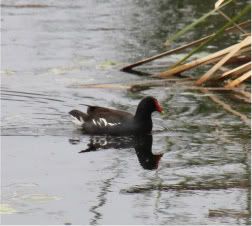
A fellow birdwatcher helped us identify the moorhen. We're actually toying with the idea of starting a meetup group to get some more people out birdwatching... :)
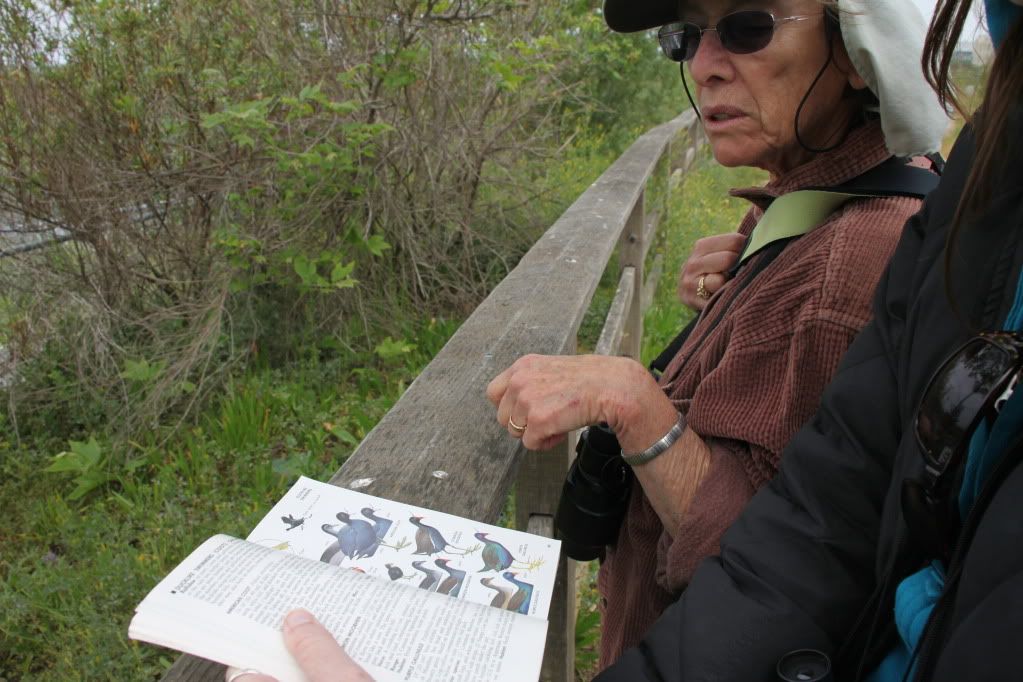
The Common Grackle has a really annoying call. Every time I saw it, I'd say "release the grackle!!" It never got old. lol
It was really hard to take this American Coot's picture as it kept diving underwater to eat whatever the hell it eats. It was cute.
We saw two hummingbirds, but this is the one that we were kinda sure on the identification...
Rufous Hummingbird
The Canadian goose flies really fast. Hence the blur.
This is probably my best shot of the day. The Double crusted Cormorant was very close to us, and it wasn't going anywhere. Why?
Because it was busy turning on the charm for this lady cormorant. It was slowly flapping his wings and doing a fine looking mating ritual. I felt like one of those National Geographic photographers... lol
That feeling quickly subsided however, when I failed to get a picture of this Killdeer.
I've always loved the Red-winged Blackbird. An elegant black with the perfect splash of color.
Yes, Mallards are everywhere, but I still think they're neat. When I was a kid, my mom used to take my brother and me to a park and we would feed oats to them.
A rather shoddy picture of a Ruddy Duck...
If you've been clicking on the links and seeing the pro images, you're probably thinking that my versions are somewhat lacking. lol Well,Terry Sohl's ruddy duck was taken with a Canon 20D, 400 5.6L, so if anyone's looking for gifts for my birthday... or maybe if I put ads on my blog I can afford one in 1,000 years. But until I pluck down the $1,700, I am (you are) just going to have to make due with my crappy pics. :)
We weren't sure about this bird, but our best guess was a Yellow-Rumped Warbler.
This was another one that was hard to determine - we thought it was a Viero. I suppose I should have mentioned that Ionic had a basic pair of binoculars that cost $10 and I had a zoom lens. We're not the most fancy birders... lol
We saw two Shorebirds.
The birds we saw looked like the ones in the linked picture, but the picture doesn't specify what type of shorebirds they are. I like how that website stresses that shorebirds "are among the most difficult birds to identify. Some species are quite similar to other species." We gave up after trying to match the beak shape, legs, back, chest, tail, with dozens of birds.
Great Egret - Imagine how awesome this picture would have been if the egret was actually in focus... lol I loved this bird's graceful neck and in flight they are a thing of beauty. They're also easy to spot as they were only birds that were stark against the landscape.
Snowy Egret
I did take one of these, but it was really sucky and I'm too tired to dig through the images to try and find it. You'll have to trust me.
Pied-Billed Grebe If you look closely, you can see the pied-billed grebe in the bird group shot at the end of this post...
Something that looked like some sort of goose, but never moved and we never got a clear view... I'm counting it anyway. lol
Other birds that we saw that I couldn't get a picture of:
and even the grandest of them all, a Great Blue Heron. I was bummed I didn't get a shot of it - all I saw was a large blue gray streak flying across the water.
So in total, we identified 24 species of birds in less than two hours. And even better, we didn't have to get up at the crack of dawn to do it!
It's amazing and inspiring to see that even after two hundred years of human impact, when wildlife are provided with a safe and sheltered space, they will use it and thrive.
(Can you see the Pied-Billed Grebe?)
If you're interested in doing some birding at the Ballona Wetlands, here are some websites you might find useful:

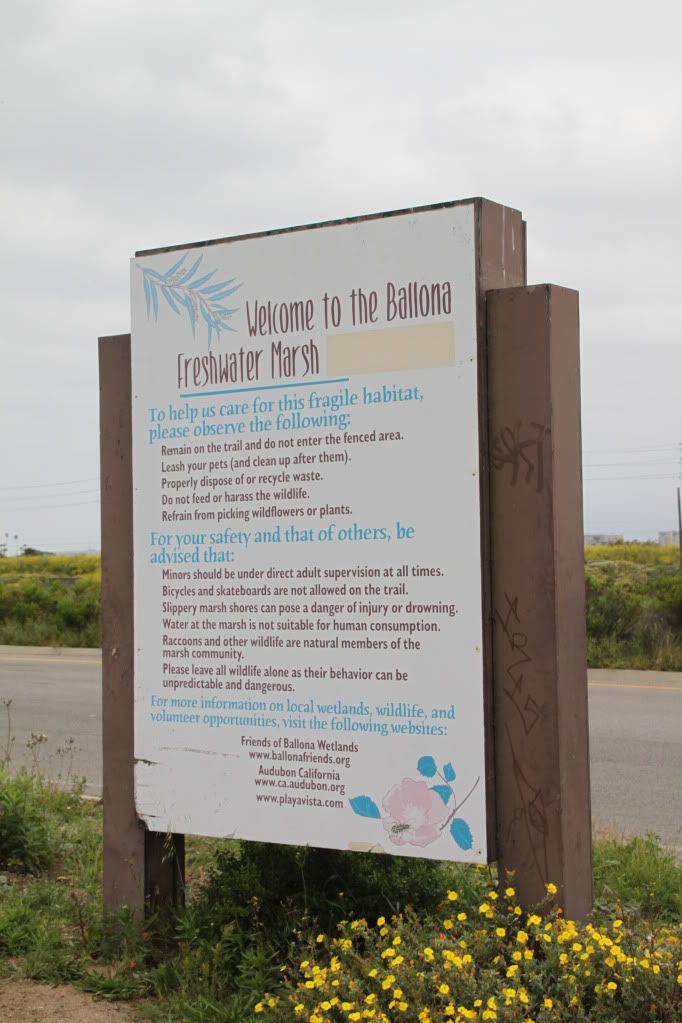
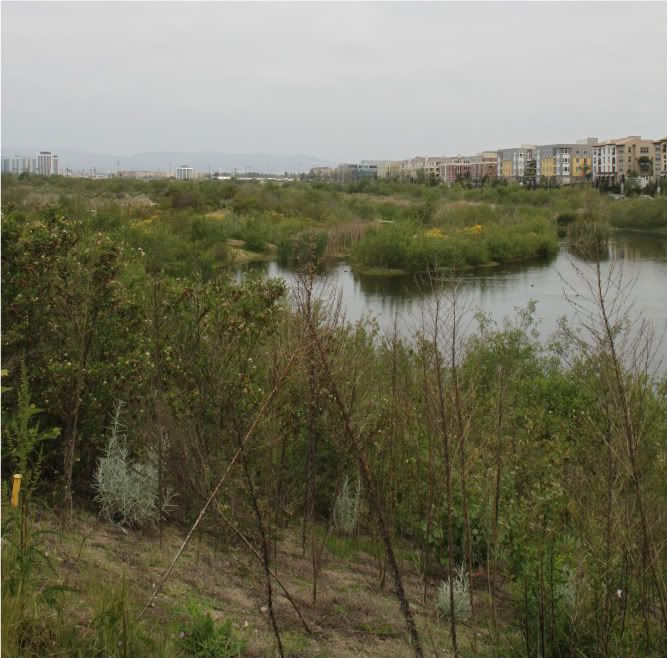
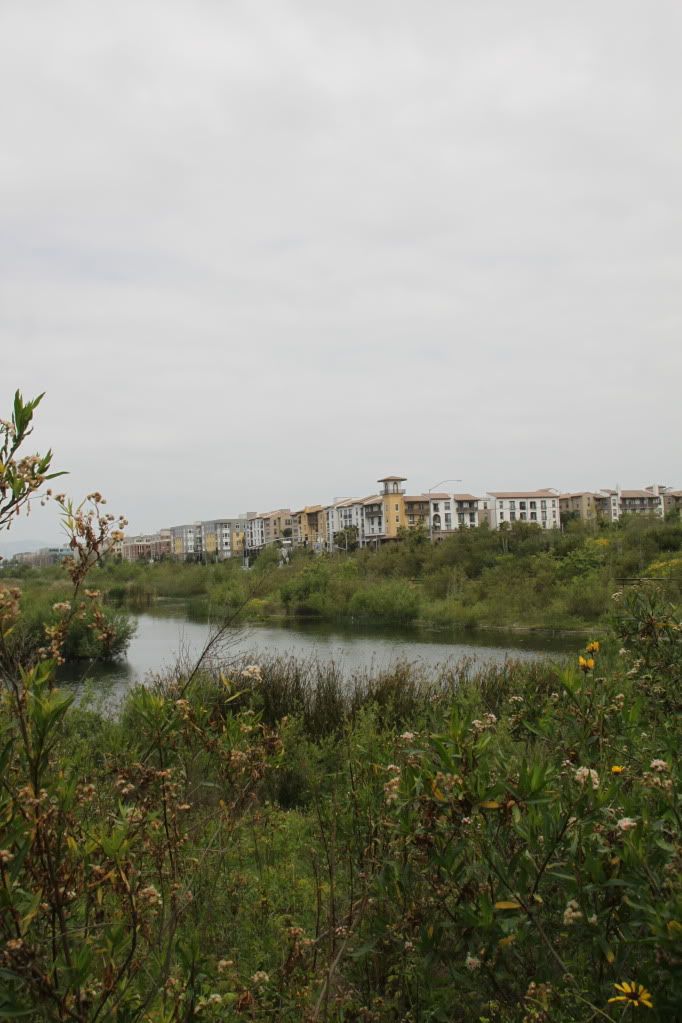

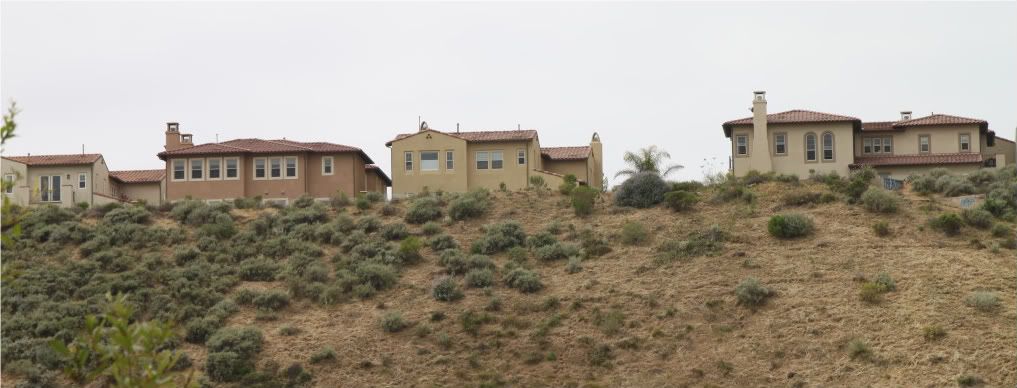

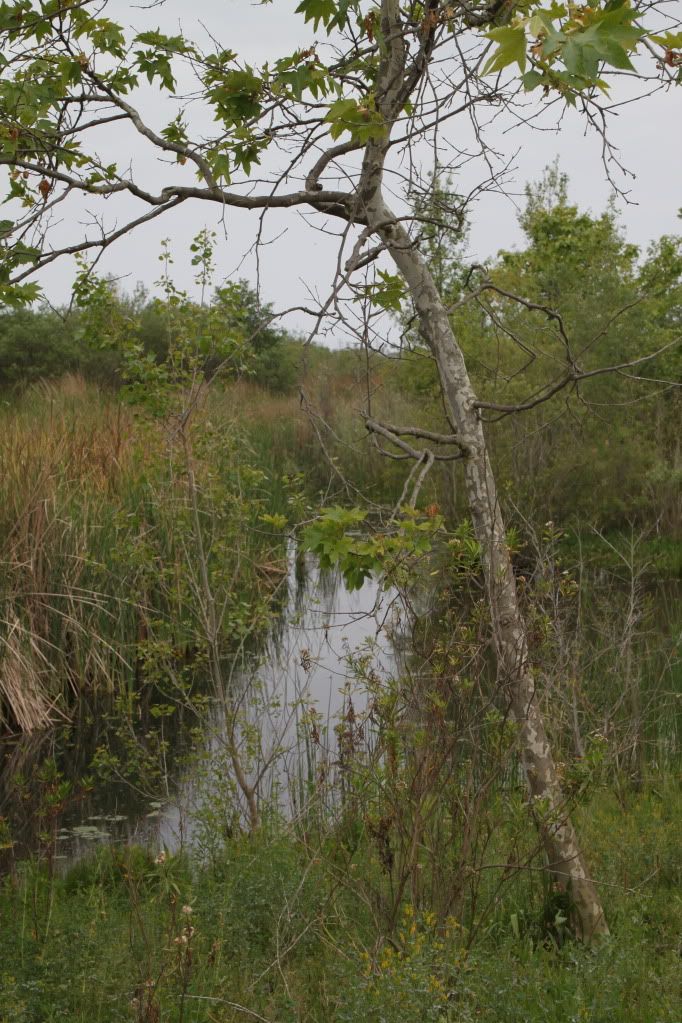
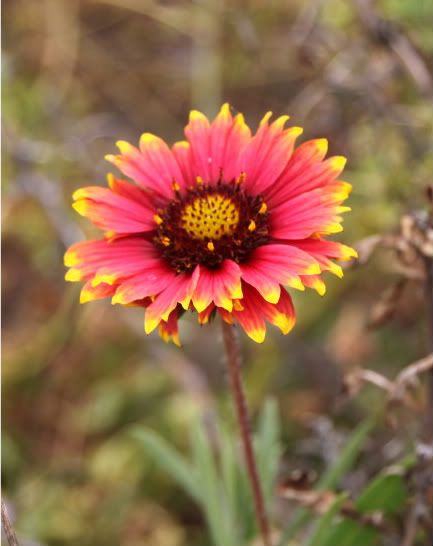
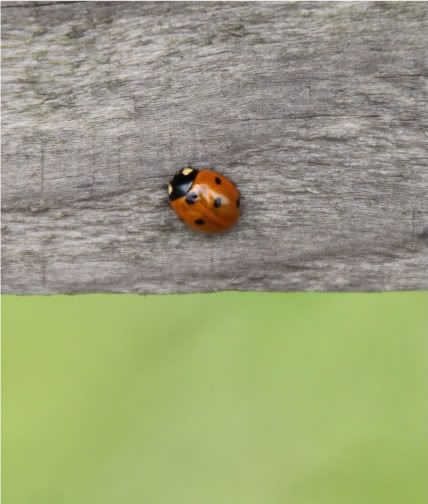



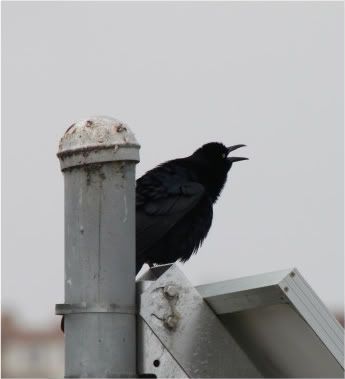
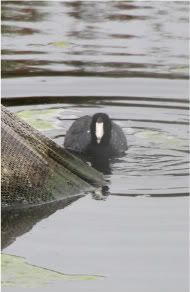



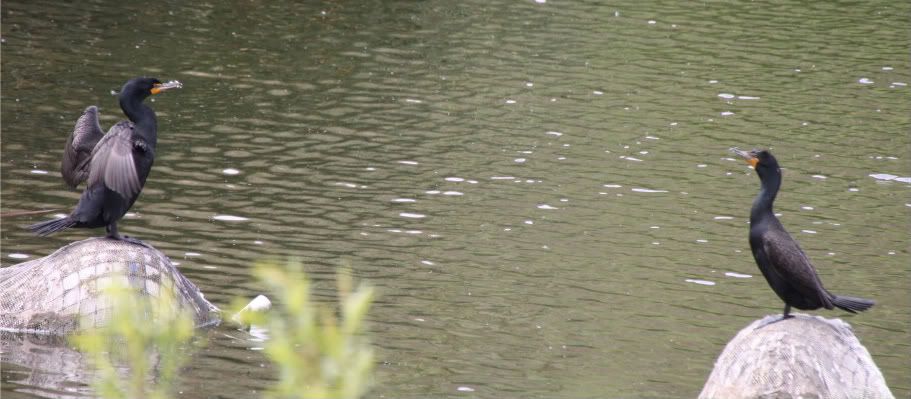
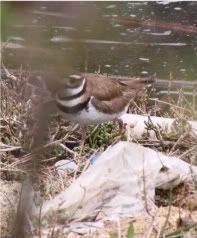
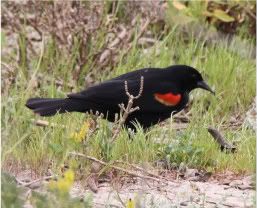
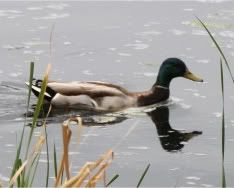
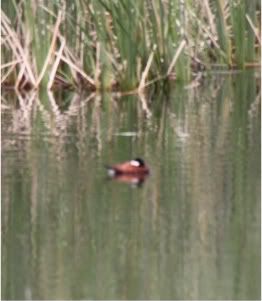

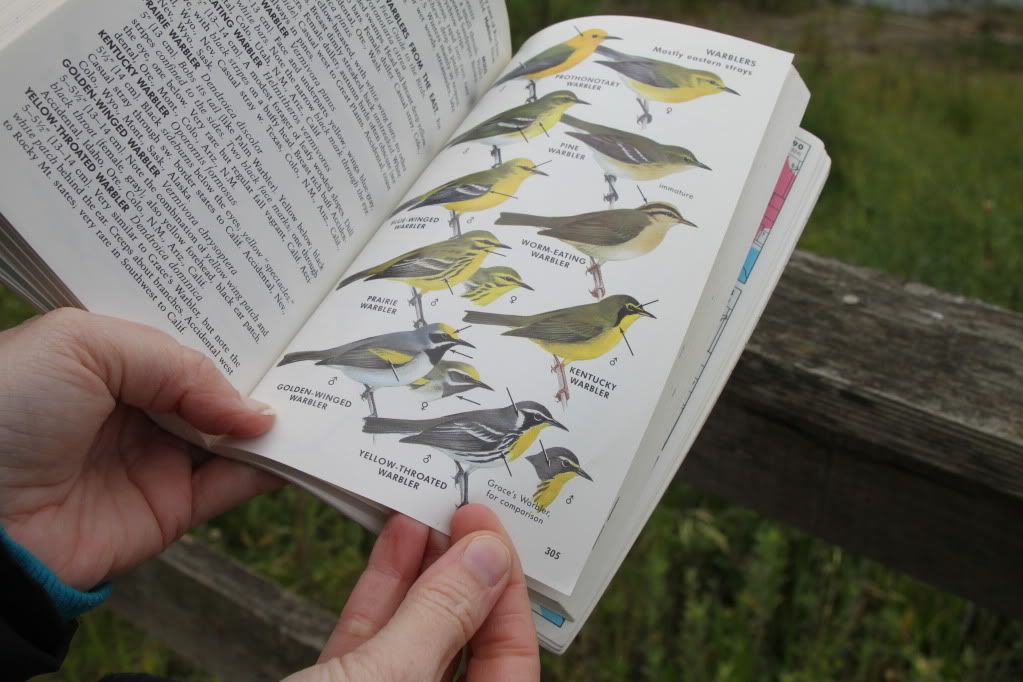
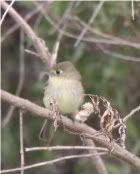



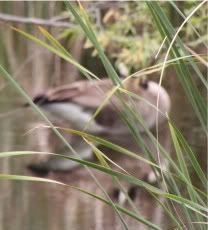
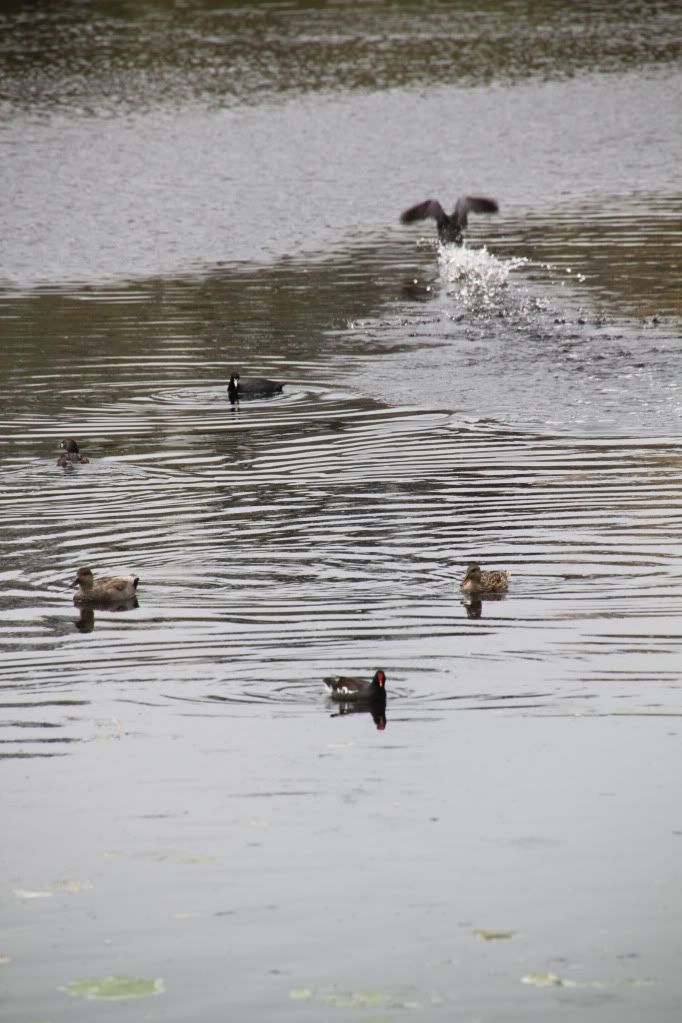
6 comments:
Fine pictures, Insomniac. So what if some aren't in focus; not all of mine ever are.
Your docent was from Friends of Ballona Wetlands, the group that got Playa Vista to BUILD that thriving Freshwater Marsh, and that runs the tours from 10-11 a.m.the second and fourth Saturdays of each month.
We also do salt marsh and dunes tours (the other part of the wetlands) every second Sunday from one to three, and folks can come and help restore the dunes the fourth Sunday from 9:30 - noon.
We liked your pictures. Thanks for loving the wetlands. We'll put a link from our blog to yours so that people can see them.
Richard Beban
Co-Executive Director
Friends of the Ballona Wetlands
The Friends of Ballona Wetlands are also extremely close to the developer of Playa Vista. Until the state bought the 600 acres, the Friends supported the developer's plan to pave over half of the 600 acres. For a different view, check out our website, http://saveallofballona.org
--Rex Frankel, director, Ballona Ecosystem Education Project
Nice bokeh on your flower photo!
i'm amazed that this exists where it does.
Hi, it's Liz Fairfax from Amherst! I found your blog via fb... I had to de-lurk to say that I live less than 5 minutes from the Wetlands, & love birding; so if you do put together a meetup group for that purpose, please let me know. I hope all is well w/you!
Hi, it's Liz Fairfax from Amherst! I found your blog via fb... I had to de-lurk to say that I live less than 5 minutes from the Wetlands, & love birding; so if you do put together a meetup group for that purpose, please let me know. I hope all is well w/you!
Post a Comment